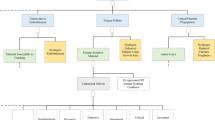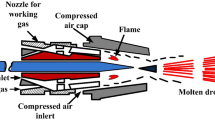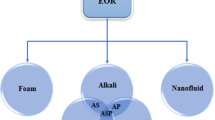Abstract
The safety of gasholders relies on the reliability of the sealing concept, which usually applies a liquid seal. In the case of a viscosity increase of the sealing medium, the risk of a gas breakthrough multiplies, which must be prevented at all costs. Monitoring of sealing fluid samples from field usage in combination with laboratory tests of model mixtures were used to identify safety influencings variables. Water has proven to be the main factor responsible for most adverse property changes. It acts in both ways, directly altering the liquid’s properties and indirectly promoting corrosion. Hence, water separation is one of the key parameters of the liquids. An adapted method for the determination of water separability was established and the findings from the field monitoring were used to set up a test matrix for further investigations. The findings of this point out the key influencing factors determining the usability of sealing fluids and are applied for improving the liquids by targeted testing methods.
Zusammenfassung
Die Sicherheit von Gasbehältern hängt von der Zuverlässigkeit des Dichtungskonzepts ab, das durch eine Flüssigkeitsdichtung realisiert wird. Steigt die Viskosität des Dichtungsmediums, so steigt auch das Risiko eines Gasdurchbruchs – dies muss mit allen Mitteln verhindert werden. Die Überwachung von Feldproben in Kombination mit zusätzlichen Labortests an Modellmischungen wurde genutzt, um Einflussgrößen zu identifizieren. Wasser wurde als Haupteinflussgröße gezeigt, da es sowohl direkt als auch indirekt durch die Förderung von Korrosion für die meisten Eigenschaftsänderungen verantwortlich ist. Darauf basierend wurde eine angepasste Methode zur Bestimmung des Wasserabscheidevermögens etabliert und die Erkenntnisse aus dem Feldmonitoring wurden genutzt, um eine Testmatrix für weitere Untersuchungen zu erstellen. Die Ergebnisse dieser Arbeit tragen zum Verständnis von Teerölen bei und können zur Verbesserung der im Feld vorherrschenden Überwachungsmethoden und Sicherheitskonzepten herangezogen werden.












Similar content being viewed by others
References
IARC Working Group on the Evaluation of Carcinogenic Risks to Human: Occupational exposures during coal-tar distillation. In: IARC monographs on the evaluation of carcinogenic risks to humans, no. 100F. Chemical Agents and Related Occupations, Lyon (2012)
Coulon, F., Orsi, R., Turner, C., Walton, C., Daly, P., Pollard, S.J.: Understanding the fate and transport of petroleum hydrocarbons from coal tar. ScienceDirect 35(2),248–252 (2008),https://doi.org/10.1016/j.envint.2008.06.005
Franz, R., Grafl, A., Stojanovic, B., Adam, K.: Application oriented oil selection for gas holders—a lab-to-field approach. In: TAE Stuttgart. (2018)
Hans Leffer: leffer.de. https://www.leffer.de/upload/Gasholder_construction_catalogue(1).pdf, Accessed 8 Dec 2021
Cash, W.: Machinery lubrication. https://www.machinerylubrication.com/Read/28766/what-is-lubrication, Accessed 8 Dec 2021
Noria Corporation: Know the effects of water contamination, Accessed 17 Jan 2022
F. S. a. P. Sherman, “The Texture of Ice Cream 2. Rheological Properties of Frozen Ice Cream,” Journal of Food schience vol 31, 1966. p.2224–2229
Meier, B.: Institut Für Energietechnik (2014). https://www.iet.hsr.ch/fileadmin/user_upload/iet.hsr.ch/Power-to-Gas/Kurzberichte/10_Heiz-_und_Brennwerte.pdf, Accessed 6 Jan 2022
Acknowledgements
This work was funded by the “Austrian COMET-Program” (project InTribology1, no. 872176) via the Austrian Research Promotion Agency (FFG) and the federal states of Niederösterreich and Vorarlberg and was carried out within the “Excellence Centre of Tribology” (AC2T research GmbH).
Author information
Authors and Affiliations
Corresponding author
Additional information
Publisher’s Note
Springer Nature remains neutral with regard to jurisdictional claims in published maps and institutional affiliations.
Rights and permissions
About this article
Cite this article
Posselt, D., Adler, M. & Adam, K. Coal Tar—Special Oils in Steel Industries Using the Example of Gasholder Sealing Fluids. Berg Huettenmaenn Monatsh 167, 236–244 (2022). https://doi.org/10.1007/s00501-022-01225-3
Received:
Accepted:
Published:
Issue Date:
DOI: https://doi.org/10.1007/s00501-022-01225-3




